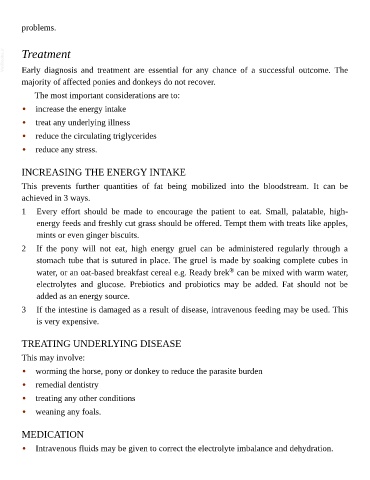Page 795 - The Veterinary Care of the Horse
P. 795
problems.
VetBooks.ir Treatment
Early diagnosis and treatment are essential for any chance of a successful outcome. The
majority of affected ponies and donkeys do not recover.
The most important considerations are to:
• increase the energy intake
• treat any underlying illness
• reduce the circulating triglycerides
• reduce any stress.
INCREASING THE ENERGY INTAKE
This prevents further quantities of fat being mobilized into the bloodstream. It can be
achieved in 3 ways.
1 Every effort should be made to encourage the patient to eat. Small, palatable, high-
energy feeds and freshly cut grass should be offered. Tempt them with treats like apples,
mints or even ginger biscuits.
2 If the pony will not eat, high energy gruel can be administered regularly through a
stomach tube that is sutured in place. The gruel is made by soaking complete cubes in
®
water, or an oat-based breakfast cereal e.g. Ready brek can be mixed with warm water,
electrolytes and glucose. Prebiotics and probiotics may be added. Fat should not be
added as an energy source.
3 If the intestine is damaged as a result of disease, intravenous feeding may be used. This
is very expensive.
TREATING UNDERLYING DISEASE
This may involve:
• worming the horse, pony or donkey to reduce the parasite burden
• remedial dentistry
• treating any other conditions
• weaning any foals.
MEDICATION
• Intravenous fluids may be given to correct the electrolyte imbalance and dehydration.

